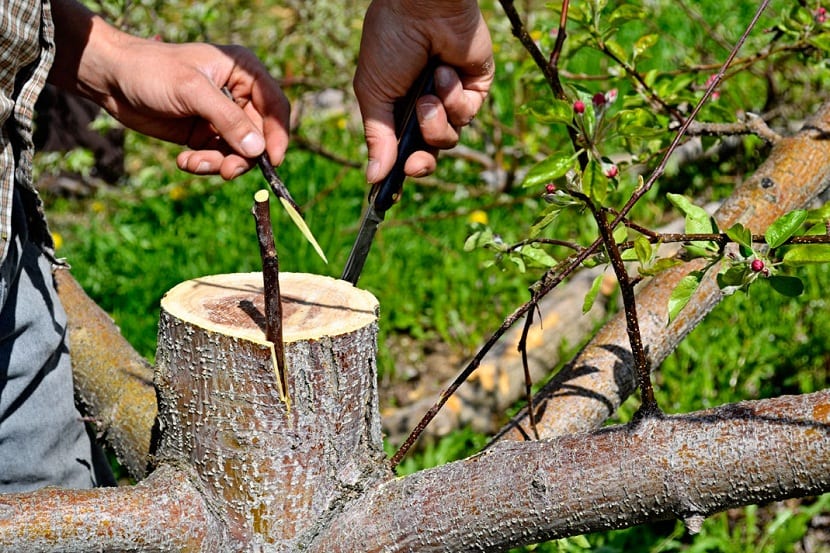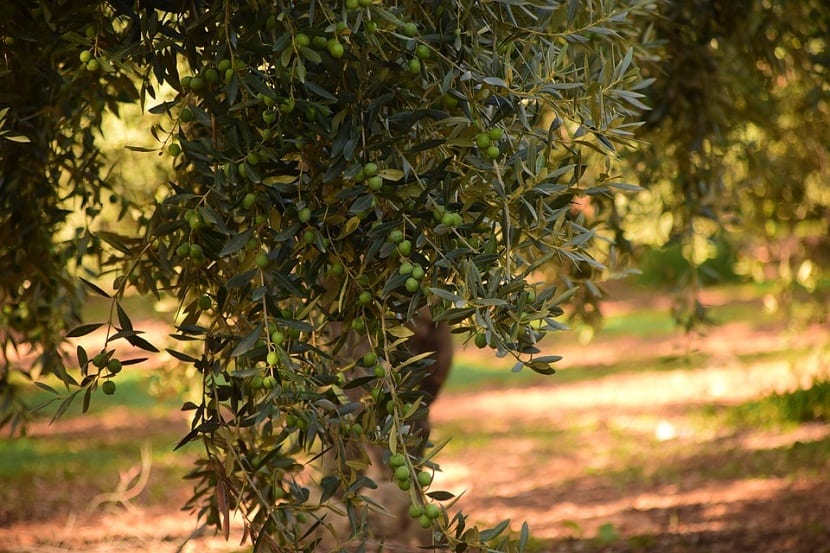
The olive tree graft is a way in which plants multiply and try to introduce a piece of branch or also one or even more buds in another plant.
We know this branch or the bud by the name of graft, at the moment that the plant is included in the graft we know it by the name of pattern or graft holder. It is important to note that the practice of olive grafting is something that has been done for quite some time in very specific areas, especially in those areas where there are a large number of nurseries.

In the community of Valencia, grafting is an activity that is used very frequently with the idea of be able to multiply the olive trees.
The truth is that farmers have the possibility of manufacturing their own nurseries through use of olive pits or also using olive edges, which later will be used as a graft taking into account the variety of olive tree that they are going to cultivate and is that the olive graft is used especially to change variety of trees that are adults.
Types of olive buds or branches
In the sprouts or olive branches that farmers have to use to be able to have these grafts, we can identify them in three different kinds of buds, wood buds, fruit buds and dormant buds.
One-year branches
This is a kind of shoot or branch in which the auxiliary buds at the base of the leaves are fully appreciated, being able to highlight that these are branches that are used for PUA grafting, when its thickness is the most indicated.
Two-year branches
These are branches in which the base of the leaves has not produced fruits, in the same way we can appreciate the auxiliary bud, but some of these tend to lose their vigor, this being the reason why certain olive grafts in which these branches are used do not evolve for the following year.
Three year branches
This is a type of branch where the leaves have already fallen, therefore they will not evolve. Is it is a kind of smooth branch, a signal that corresponds to a cut of the leaf or the fruit that has fallen and also a third, which is usually the upper one and at the same time corresponds to the latent bud, so it will not become wood when grafting .
Systems for olive grafting

Each of the systems that we are going to explain are chosen taking into account the diameter as well as the age of the pattern.
PUA graft
This is an olive tree graft that is used especially in rootstocks that are young and that in turn have a bottom diameter one to two cm.
On this occasion, the branches to be used as grafts must be one year old, as well as from the middle part, because the first vegetative bud evolves quite well with this wood. It is important to mention that if we do this graft close to the ground, we have to tie it very well with a plastic or raffia tape, apart from the fact that it is recommended that we make a small pile of soil to cover every last bud.
The recommended season for this transplant is mid to late winter, but it can also be done in spring.
Shield budding
This is the easiest olive tree graft, especially when we can use a young plant as a pattern that can be 1 to 2 years old or when they are branches of an adult tree with a diameter of 3 to 6 cm.
This type of graft should preferably be performed in April, May and June, during the summer, with new branches or buds of the same year.
Veneer graft
This is the olive tree graft considered the most indicated, especially when we want graft trunks or branches that are thick and greater than 6 or 7 cm in diameter. The reason for this is that if we have a large surface to place the graft, we can make it larger with the idea of having a greater contact surface between the graft and of course the pattern, we even have the possibility of placing more buds per graft.
The most recommended time to do this is similar to that of the shield graft, that is, in late winter and early spring, when the stock and graft are in full growth.
Can olive trees be grafted with other trees?
Hi Ilie.
It depends on what those other trees are. Olive trees belong to the Oleaceae family, and can only be grafted onto other trees of this same family, such as Syringa, Forsythia, or of course other Olea.
Greetings.